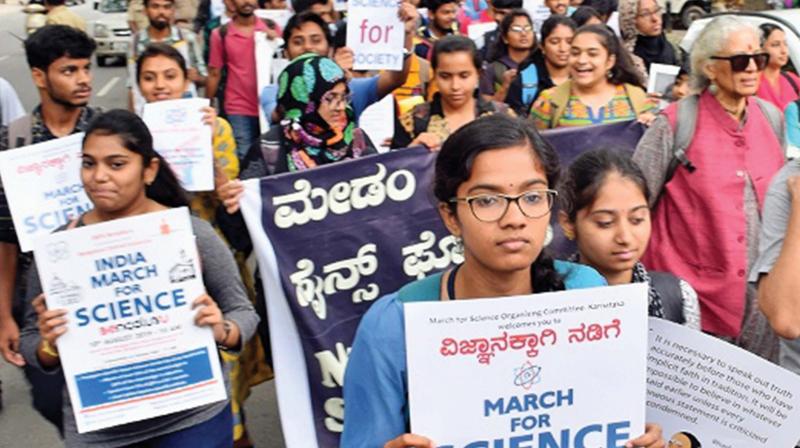‘Spend 3 per cent of GDP on science research’
The nation is pushed to the brim of water crisis and the states are jostling among themselves to get water.

BENGALURU: The counter to superstitious beliefs is the reverberation of scientific temper among the masses but scientists have failed in inculcating scientitic temper, according to astrophysicist, Prof Prajval Sastry.
“Civic society is promoting scientific temper and not the scientists. Our education structure promotes performance-based orientation. It is untenable for scientists to carry out research on taxpayers money and do not communicate their work to public. It is unethical. They must engage with public,” she said at the third edition of India March for Science (IMFS).
The nation is pushed to the brim of water crisis and the states are jostling among themselves to get water. Urban water expert, Dr Bhakti Devi associated the problem in the linear system where the intention is to extract water from a remote source to supply to a remote source.
IMFS stated that India spends below 3% and 1% of the GDP in education and R&D. The march pressed for the allocation of 10% of the central budget and 30% of the state budget for education and demanded that at least 3% of the GDP should be spent for science and technological research.
Quoting Ashokan edicts, S Vishwanath, adjunct faculty at Azim Premji University said, “Our culture is a groundwater culture. India has one of the largest areas under watershed works and it has one of the largest canal irrigation systems of the world. We should not see ourselves in isolation as we are part of a larger management.”
He further pointed out that with population explosion from 330 million in 1947 to 1200 million in 2017, fundamental issues like food security, whose production grew from 50 million hectares in 1951 to 270 million hectares in 2017 and the demand for electricity that surged are to be looked into.
“In 1960’s we had a famine and drought where people were starving. Then we got hybrid varieties of wheat from Mexico and then rice to increase production. We did not realize then the impact that it will have on other crops,” he gave the reason behind the drying up of rivers.
Dr TV Ramachandra, scientist at IISc elucidated the change in land pattern where in Bengaluru that once had 63% of its area covered in vegetation has now 78% of concrete land.

